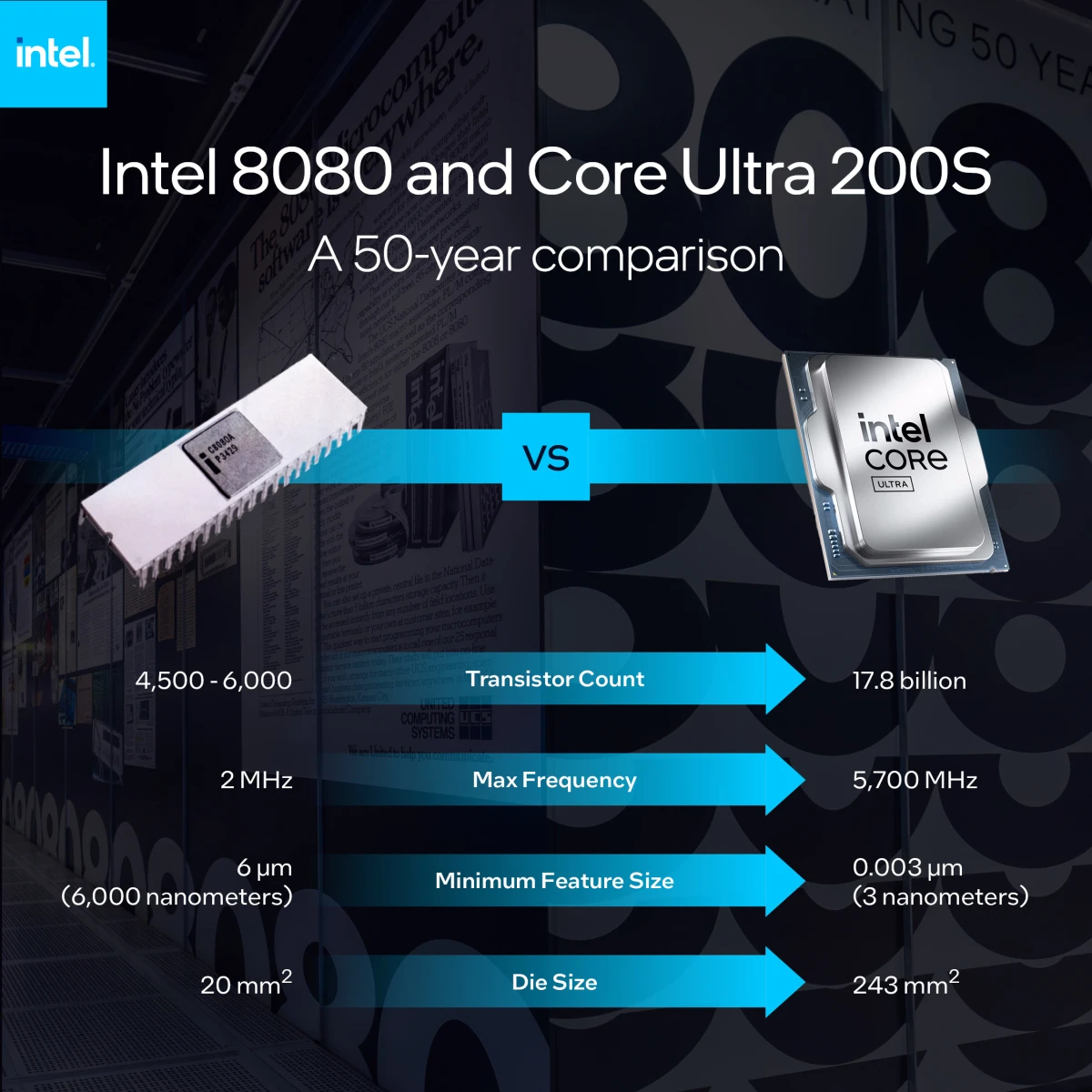Qualcomm Announces Snapdragon 8 Gen 5 Platform
Qualcomm added its latest smartphone platform to its premium-tier Snapdragon range.

One of the most important products in tech history, the Intel 8080, was introduced 50 years ago. It is considered the first true general-purpose microprocessor. It didn’t just revolutionize microprocessors, it created the microprocessor market.
“The 4004 and 8008 suggested it, but the 8080 made it real,” said Federico Faggin, Intel’s lead designer for the 8080 and its predecessor processors, the 4004 and 8008. Before the 8080’s launch in 1974, Intel mostly made chips designed for specific types of customers and their needs. And though the 4004 and 8008 were later used in applications beyond their original use cases, general use was not the original design goal. The 4004, for example, was originally designed for Busicom’s 141-PF printing calculator, and the 8008 for Computer Terminal Corporation’s Datapoint 2200 programmable terminal.
Faggin designed the 8080 in direct response to feedback from 8008 customers who reported the earlier chip’s design restricted the scale and complexity of the software they wanted to create. The resulting new 8-bit chip was more efficient, more powerful, and more flexible – capable of 290,000 operations per second (10 times that of the 8008). And with a 40-pin configuration, it made connecting to other components easier than the 8008’s 18-pin design. The 8080 also integrated the functions of the supporting chips that the 4004 and 8008 needed, making it a true single-chip microprocessor.

It’s not too much to say that the 8080 opened the world to microprocessors, delivering computing to not just all companies, but all people. Busicom invested $60,000 for Intel to develop the 4004 for proprietary use, which reflects the chip-designing norms of the time. That changed with the 8080 and its democratic customizability. Companies had a shiny new option: spend $360 and program the processor to do whatever was needed. The 8080 proved that a powerful, general-purpose processor could have unlimited applications and countless customers, fueling the mass adoption of personal computers, creating new categories of silicon-powered devices, and spurring programming as a relevant and in-demand skill.
The 8080 represented a world of possibilities in a tiny package, putting power in the hands of programmers to push the boundaries of technology. And, its genetics are still in chips all over the world, as it directly inspired the x86 architecture that became the world’s most widely used computing architecture. Today, chips are nestled inside computers, cars, cell towers, digital signs, data centers, and a myriad of connected devices.